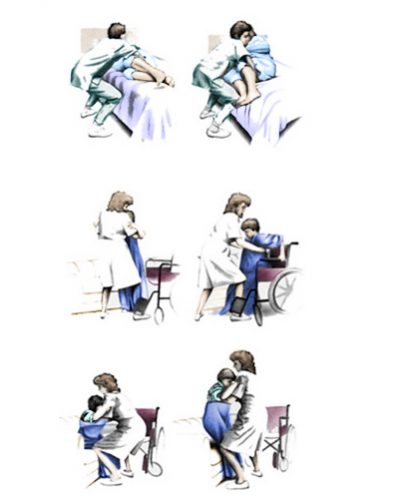In working with people with disabilities, a great emphasis is placed on lifting techniques. There are three reasons for this. Firstly, in the interest of the safety of everyone involved, secondly, the comfort and dignity of the participant who is being lifted and thirdly the physical welfare of the person doing the lifting.
It is important to be aware of appropriate lifting techniques to avoid injury to yourself and also to the participants to whom you are providing assistance.
Incorrect lifting can lead to pain and injury to the back, neck and arms. Once you have injured your back there is the possibility that it will always present you with problems and reduce your own physical abilities.
Be aware of the strategies that will firstly, reduce your need to lift, and secondly provide for a safe and effective way of lifting, minimising the opportunity for back injury to occur.
The following information will assist you to lift effectively, although the best way to familiarise yourself with lifting techniques is to observe effective lifting situations and talk to people experienced in good lifting practices.
- Know your own limitations and stay within these.
- NEVER Lift a person who can support their own weight.
- If you do need to lift a person, firstly think do I need some assistance and is there enough space for a safe lift?
- Do not lift a person if you can use a transfer method of moving the person.
Plan the lift carefully:
- Arrange the area before you lift – move furniture if required, etc.
- Decide on the best way to lift.
- Communicate with others to assist in an organised way.
Consider the participant you are lifting at all times. Talk to them about the lift; let them know what you are doing and where you will be positioning them. Initially place yourself so that the participant can see that you are about to lift them. Look for signs of discomfort on the face of the participant you are lifting.
When lifting a participant with a disability, you need to get physically close to the participant. This does not mean that a person with a disability will feel comfortable about getting physically close to you at other times. It is important for you to remember to take care not to invade a participant’s personal space.
After completing the lift always make sure that the participant is secure in their new position, whether it be a wheelchair, casual chair or bed.
Diagrams that help to explain correct lifting techniques are in the Appendix of this manual.
View the following clips also:

